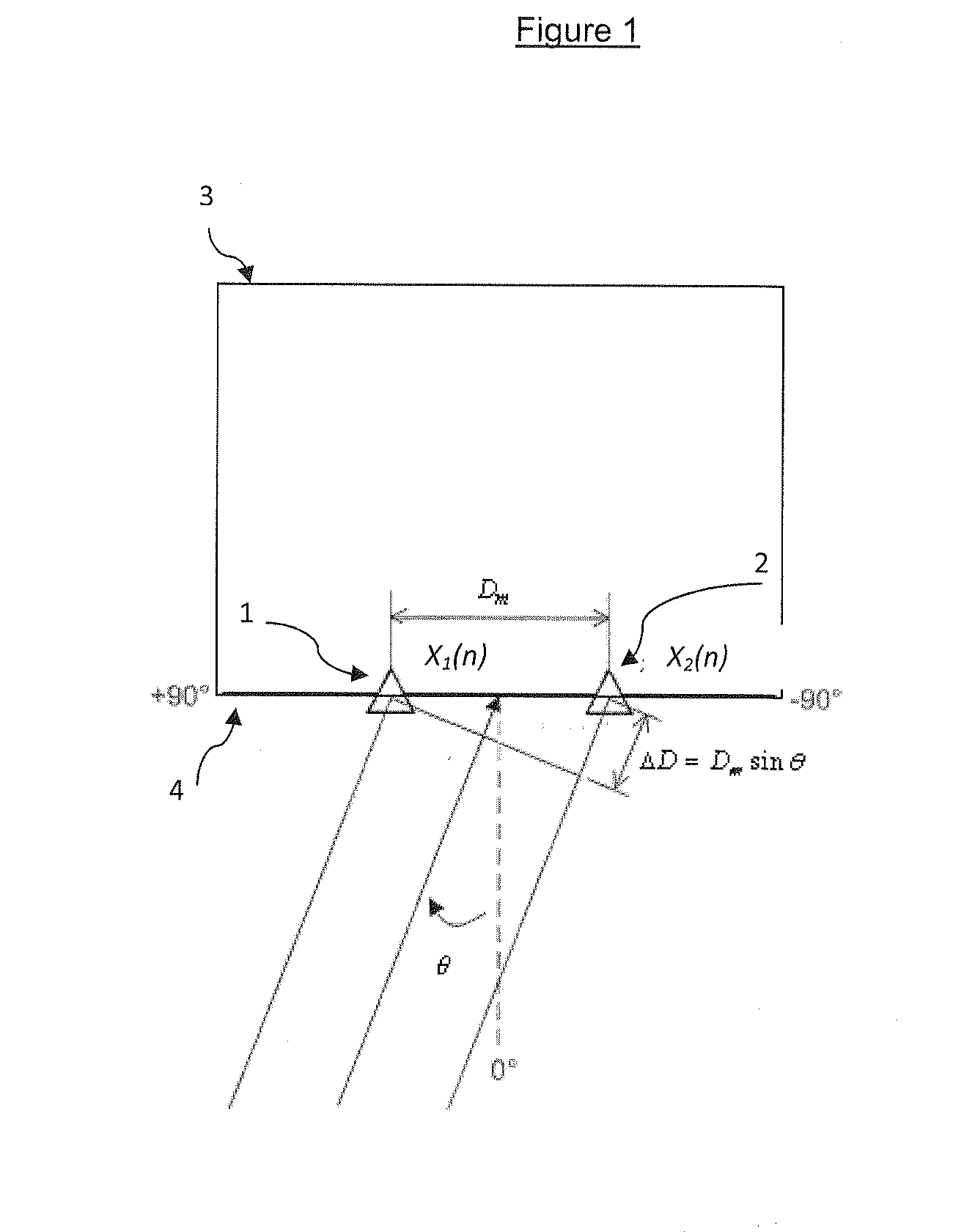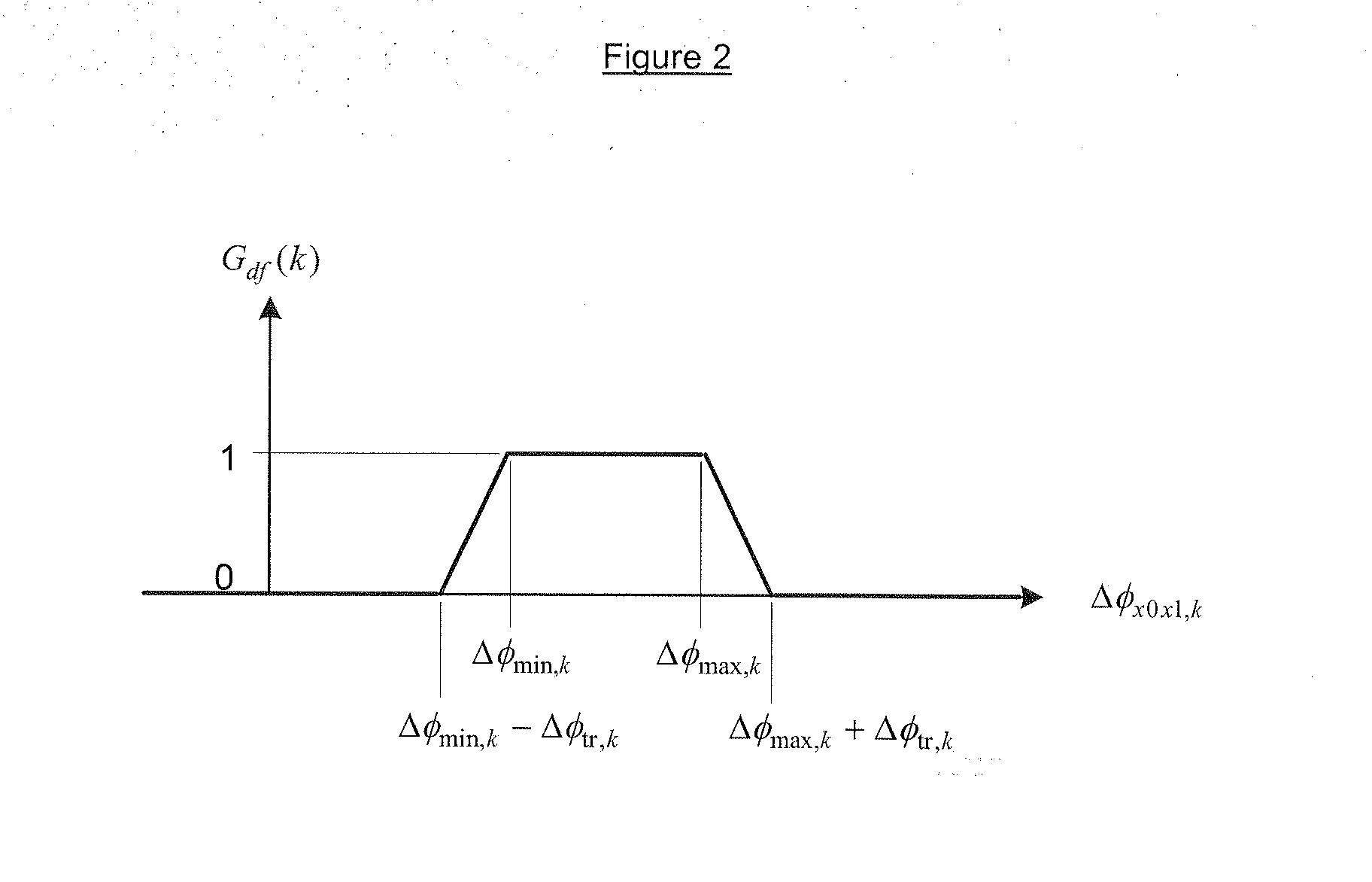Wind Noise Mitigation
a technology of wind buffeting noise and acoustic signal, which is applied in the direction of transducer circuits, transducer casings/cabinets/supports, microphones, etc., can solve the problems of affecting the quality of acoustic signal, difficult for the microphone to detect a desired signal, and wind buffeting nois
- Summary
- Abstract
- Description
- Claims
- Application Information
AI Technical Summary
Benefits of technology
Problems solved by technology
Method used
Image
Examples
Embodiment Construction
[0059]The following discloses two frequency-domain two-microphone based algorithms that are designed to help mitigate the wind buffeting problem:[0060]i) Coherence processing, which detects and suppresses wind buffeting noise by tracking the coherence between signals observed by two microphones; and[0061]ii) Directional filtering, which protects signals arriving from certain directions and filters out other signals, including wind buffeting noise.
[0062]These two algorithms can be implemented individually, or in conjunction with other algorithms since they are based on different but complementary information. These algorithms can be generalized and applied to the cases with three or more microphones. Both algorithms have low complexity and are suitable for embedded platforms, such as Bluetooth headsets, mobile phones, and hearing aide.
[0063]The following further discloses a unique multi-tier special filtering (MTSF) approach which better mitigates both wind buffeting and other acoust...
PUM
 Login to View More
Login to View More Abstract
Description
Claims
Application Information
 Login to View More
Login to View More - R&D
- Intellectual Property
- Life Sciences
- Materials
- Tech Scout
- Unparalleled Data Quality
- Higher Quality Content
- 60% Fewer Hallucinations
Browse by: Latest US Patents, China's latest patents, Technical Efficacy Thesaurus, Application Domain, Technology Topic, Popular Technical Reports.
© 2025 PatSnap. All rights reserved.Legal|Privacy policy|Modern Slavery Act Transparency Statement|Sitemap|About US| Contact US: help@patsnap.com



